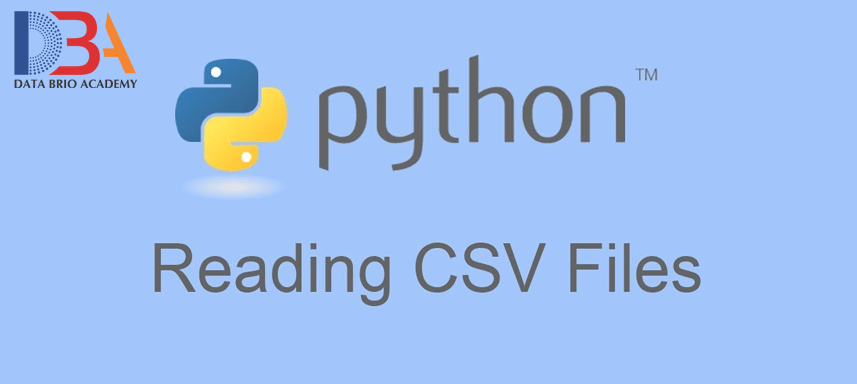What are CSV file format?
A CSV (Comma Separated Values) file is a simple file format that allows to save a file in a tabular format from a spreadsheet application. Excel spreadsheets and databases are frequently imported and exported as CSV files . This is one of the most common methods for exchanging data between applications and is a popular data format for analytics and data science studies supported by a wide range of applications. Each field of a CSV file has a delimiter (in most cases, a comma) to divide the data into rows and columns. The CSV format must be saved with the .csv extension.
Let us look at how to read and write a csv file using python in this article.
- Reading a CSV file in Python
Here let me take “iris.csv” file. Required Python Library is Pandas and the function is read_csv.
#Import pandas as pd from pandas library.
import pandas as pd
pd.read_csv(“iris.csv”)
iris.head() # for displaying first 5 rows
iris.shape # displays the size of the dataset in rows and columns which is (150,6)
- Writing CSV files in Python.
There are in-built modules available for writing csv files in python and it can be done in 2 ways –
- Using csv.writer class.
- Using csv.DictWriter class.
Using csv.writer class, data is inserted in the csv file. In this class, data is converted into a delimited string using a writer object. csv.writer class provides two methods of writing the csv –
- writerow(): This method writes a single row at a time.
- writerows(): This method is used to write multiple rows at a time.
# Python program to demonstrate writing to CSV.
import csv
# Fields
fields = [‘Name’, ‘Branch’, ‘Year’, ‘CGPA’]
# Data rows of csv file
rows = [ [‘Joey’, ‘COE’, ‘2’, ‘9.0’],
[‘Chandeller’, ‘COE’, ‘2’, ‘9.1’],
[‘Phoebe’, ‘IT’, ‘2’, ‘9.3’],
[‘Monica’, ‘SE’, ‘1’, ‘9.5’],
[‘Ross’, ‘MCE’, ‘3’, ‘7.8’],
[‘Rachel’, ‘EP’, ‘2’, ‘9.1’]]
# Name of csv file
filename = “university_records.csv”
# Writing to csv file
with open(filename, ‘w’) as csvfile:
# Creating a csv writer object
csvwriter = csv.writer(csvfile)
# Writing the fields
csvwriter.writerow(fields)
# zWriting the data rows
csvwriter.writerows(rows)
Output: once you run the code the .csv file will be saved on your PC.
Using csv.DictWriter class provides two methods for writing to csv.
They are:
- writeheader() method simply writes the first row of your csv using the pre-specified field names.
- writerows() this method simply writes all the rows but in each row, it writes only the values.
# Importing the csv module in python
import csv
# my data rows as dictionary objects
mydict =[{‘branch’: ‘COE’, ‘cgpa’: ‘9.0’, ‘name’: ‘Joey’, ‘year’: ‘2’},
{‘branch’: ‘COE’, ‘cgpa’: ‘9.1’, ‘name’: ‘Chandeller’, ‘year’: ‘2’},
{‘branch’: ‘IT’, ‘cgpa’: ‘9.3’, ‘name’: ‘Phoebe’, ‘year’: ‘2’},
{‘branch’: ‘SE’, ‘cgpa’: ‘9.5’, ‘name’: ‘Monica’, ‘year’: ‘1’},
{‘branch’: ‘MCE’, ‘cgpa’: ‘7.8’, ‘name’: ‘Ross’, ‘year’: ‘3’},
{‘branch’: ‘EP’, ‘cgpa’: ‘9.1’, ‘name’: ‘Rachel’, ‘year’: ‘2’}]
# field names
fields = [‘name’, ‘branch’, ‘year’, ‘cgpa’]
# name of csv file
filename = “university_records.csv”
# writing to csv file
with open(filename, ‘w’) as csvfile:
# creating a csv dict writer object
writer = csv.DictWriter(csvfile, fieldnames = fields)
# writing headers (field names)
writer.writeheader()
# writing data rows
writer.writerows(mydict)
Output:


